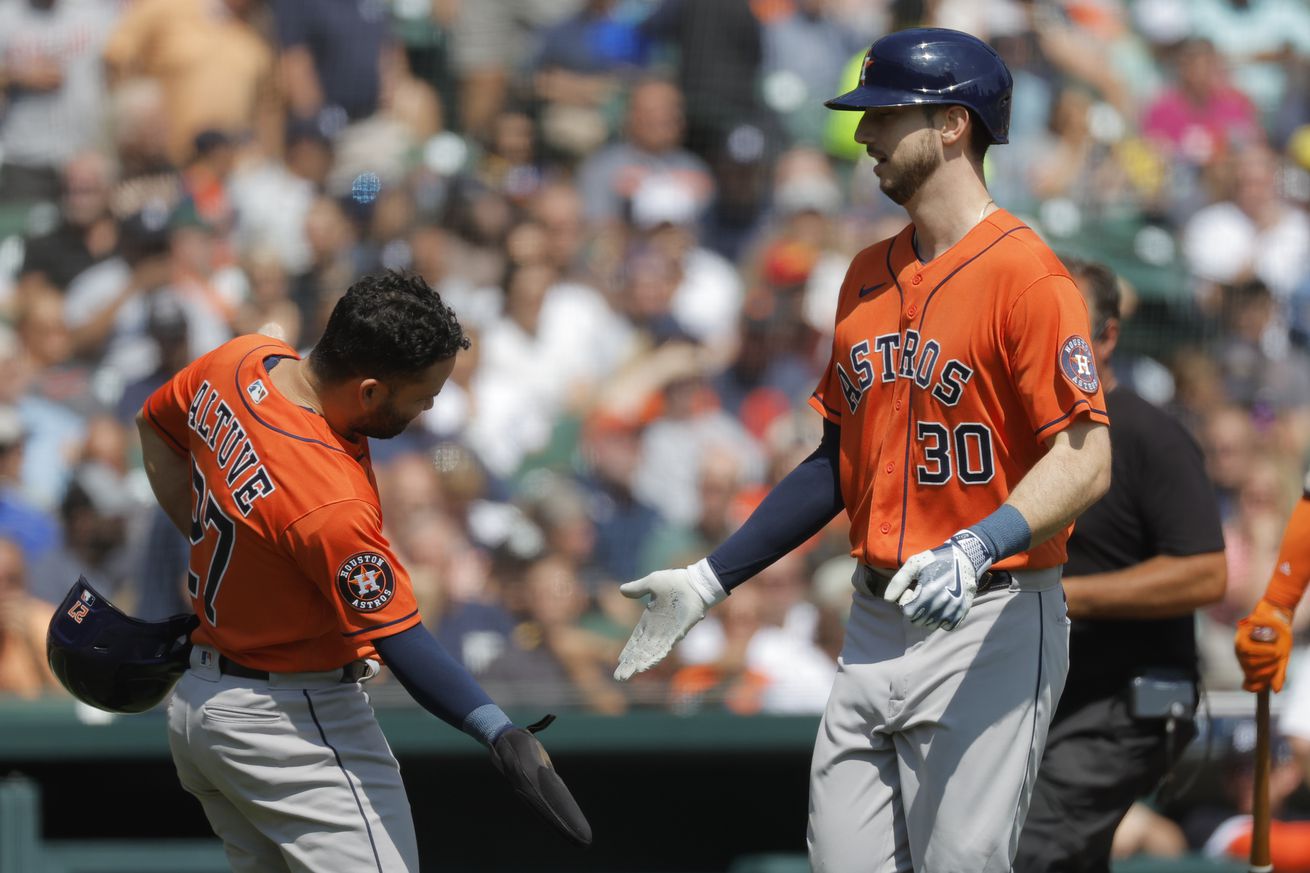
Throughout the season, I’ve been keeping track of the Astros’ offensive performance through certain periods. The cutoff dates are nearly all arbitrary as I would only check when I remembered to. I mean, life is busy and I am not certainly immune to other matters creeping up that divide my attention. But this snapshot of a handful of stats at least kept me informed of the macro that occurring with all of the micro stuff I tend to fixate on within the game. Below is where Houston’s offense was back in late May — May 28, to be precise — compared to the full season in 2022. A small sample compared to a large sample is something I normally tend to avoid, but I made an exception for this exercise.
2022 Astros: .248/.319/.424, 112 wRC+, 78.6% Contact%
2023 Astros: .244/.315/.379, 94 wRC+, 77.9% Contact%
Wait, is this Cleveland?
Checks notes
Nope.
It doesn’t take much analysis to figure out that while the Astros weren’t necessarily having an issue making contact, there was a noticeable problem with generating power. Slugging percentage isn’t a perfect stat to measure true power or lack thereof, but it does a fairly decent job of at least pointing us in the right direction. Jose Altuve’s absence, in particular, loomed large. While Mauricio Dubón filled in admirably as the regular at second base for a while, he would be the first to admit — and has — that he isn’t Altuve. Chas McCormick also missed about three weeks due to injury and his playing time for a while was noticeably inconsistent. José Abreu was present and that was about all you could nicely state about his performance. Yainer Díaz couldn’t crack the lineup for whatever reason Dusty Baker had at his disposal. For a while, the lineup was a real drag, with only Yordan Alvarez and Kyle Tucker providing any sort of offensive thump.
There was a real concern, at least for me, when Alvarez hurt his oblique in early June that the lineup would suffer even more. As the club’s best power threat, his absence was noteworthy. Sure, Abreu had heated up somewhat at the plate and Altuve was back for a while, but Alvarez is the key hinge in this lineup. Without him, this offense with everyone else healthy is thin. Surprisingly, the offense held its own, with a .252/.323/.433 slash line with a 107 wRC+. It helped that Tucker went supernova (195 wRC+) in addition to McCormick further establishing himself as an everyday player (178 wRC+). That duo drove in roughly 30% of Houston’s runs during Alvarez’s absence.
It has now been nearly a month since both Altuve and Alvarez returned to the lineup full-time. The lineup was showing signs of life even preceding their return, dating back to the All-Star break. In fact, since the break, the Astros have had one of the best lineups in baseball.
7/11 to 8/27: .274/.352/.462, 125 wRC+, 77.9% Contact%
Most of the credit for this post-break resurgence falls mainly on five players: Altuve, Tucker, McCormick, Alex Bregman, and Díaz. All five have posted a wRC+ at least 56% better than the league average (100 wRC+), with Altuve topping out at 74%. Alvarez has also performed well in his return with a 130 wRC+ in his last 120 plate appearances. Before Alvarez’s oblique injury on June 8, the only Astro with a wRC+ higher than 115 was, to no one’s shock, Alvarez (165 wRC+). While multiple regulars were above average during this time, the output was below their expected norm.
Right now, the Astros are hitting a much more respectable .256/.328/.425 with a 108 wRC+ for the entire season. The power numbers have drifted upwards and the lineup has been clicking since the All-Star break. A concern for much of the season, the offense appears more like a solution than a problem. Good timing, too, as the starting rotation other than Justin Verlander has had a rough stretch this summer. But for the first time all season, I actually feel fairly good about the lineup’s prospects for the remainder of the season. Of course, it will be only natural to see them get shut out by Chris Sale on Monday.